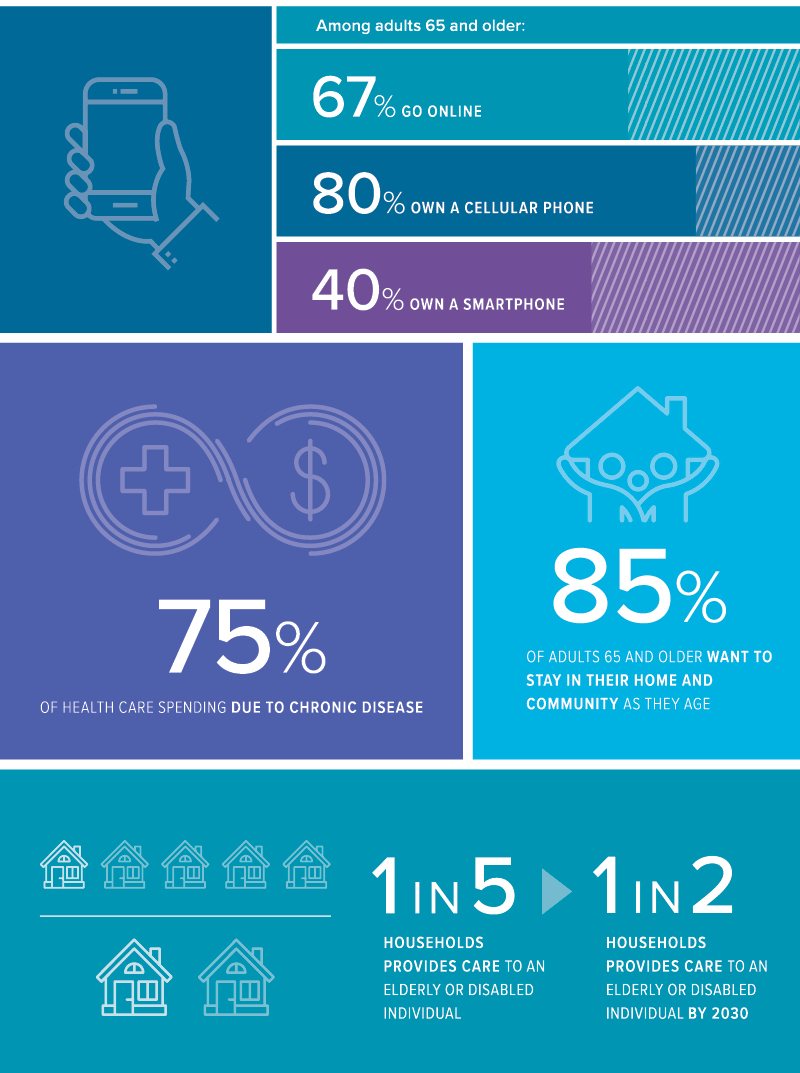Healthy Aging in a Digital World: experts design world where people age better
Imagine an 85-year-old staying healthy through balance exercises with feedback from sensors built into a wristwatch that also connects with her family in case of a fall. Or picture a 60-year-old who ensures he’s taking his cancer medications appropriately with a smartphone app that links him with his clinician. Technology can help individuals achieve personal goals and stay in regular communication with their care teams. Technologies developed in partnership with users and health care systems also enhance providers’ knowledge to deliver better care.
UC Davis has a vision to make technology work to improve health across a person’s lifespan. The Healthy Aging in a Digital World initiative unites a diverse team of experts to design, develop and evaluate creative solutions to enhance a person’s daily life. Researchers envision a world where personal devices, home monitors and mobile apps empower people to drive their health, where seamless communication generates knowledge that informs practice.
“We know that technology by itself does not solve problems,” says Heather M. Young, champion of the project and professor at the Betty Irene Moore School of Nursing at UC Davis. “It is imperative that we work with individuals, families and communities to identify what technology provides the best value and most meaningful solution in the context of daily life.”
This healthy aging vision is one of 13 Big Ideas at UC Davis — forward-thinking, interdisciplinary programs or projects that will positively impact the world for generations to come.
“UC Davis is committed to bridging the digital divide between companies that design technology with health systems that provide care, so people can use technology to live healthier lives,” adds Thomas S. Nesbitt, co-champion and UC Davis School of Medicine professor. “We invite the philanthropic partnership of our alumni and friends to translate new ideas in personalized care into meaningful changes in health care.”


